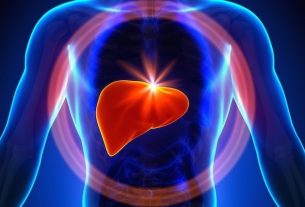Chronic sinusitis is inflammation of the mucosa of the sinuses that occurs due to infection by bacteria, viruses or fungi, allergies, anatomical changes, such as a deviated septum, inadequate or excessive use of antibiotics, and a weakened immune system.
In chronic sinusitis, symptoms usually last more than 12 weeks, such as pain in the face that worsens or lowering the head, a blocked or runny nose, the presence of yellow-green or bloody phlegm, or a cough that worsens when lying down.
The treatment of chronic sinusitis is carried out by an otorhinolaryngologist and generally involves washing the nose with saline solution and the use of medicines, such as antibiotics, anti-allergens or corticosteroids, depending on the cause of the inflammation. In some cases, surgery to drain accumulated mucus and/or correct changes in the nasal septum or remove nodules may be recommended to allow the disease to be cured. See more details on the treatment for sinusitis.

Chronic sinusitis symptoms
The main symptoms of chronic sinusitis are:
- Stuffy or runny nose;
- Yellowish or greenish phlegm;
- Nose bleeds;
- Chronic cough, which worsens when lying down;
- Post-nasal drip, which is when phlegm runs down the throat;
- Stuffy nose, which makes it difficult to breathe through the nose;
- Facial pain or headache, which worsens when you lower your head or lie down;
- Sensation of pressure inside the head;
- Decreased sense of smell and taste;
- Constant bad breath;
- Ear or throat pain;
- Dizziness;
- Excessive tiredness.
The symptoms of chronic sinusitis last more than 12 weeks and can occur after 1 or several episodes of acute sinusitis, in which there is fever, body pain and intense nasal discharge.
Furthermore, when sinusitis has an allergic cause or occurs in people with a history of allergies or rhinitis, there may be asthma attacks, itchy nose and throat, as well as worsening of symptoms when in contact with substances such as dust. See more sinusitis symptoms.
How to confirm the diagnosis
The diagnosis of chronic sinusitis is made by an otorhinolaryngologist and is normally done only by evaluating the symptoms and palpating the nasal sinuses to assess whether there is sensitivity in this region.
In addition, the doctor may order tests to confirm the diagnosis, such as computed tomography or magnetic resonance imaging, which provide detailed images of the nasal cavities and sinuses, or nasal endoscopy, to evaluate the interior of the nasal sinuses and identify whether there are other causes of chronic sinusitis. , such as nasal polyps, deviated septum or tumors, for example.
Other tests that may be requested by the doctor are laboratory analysis of nasal secretions, to assess the presence of microorganisms such as bacteria or viruses, or an allergy test, to identify an allergic cause. See how the allergy test is done.
Possible causes
Chronic sinusitis is caused by inflammation of the nasal sinuses that lasts for more than 12 weeks, due to viral, fungal or bacterial infections, or allergies. Some factors can increase the risk of developing chronic sinusitis, such as:
- Incorrect treatment of other acute sinusitis;
- Using antibiotics incorrectly or unnecessarily, repeatedly;
- Respiratory tract infections, such as colds;
- Anatomical changes, such as deviated septum, nasal polyps, hypertrophy of the nasal turbinates;
- Intense or poorly controlled asthma or allergic rhinitis;
- Gastroesophageal reflux;
- Weakened immunity, as in the case of HIV infection, or people who use corticosteroids chronically;
- Uncontrolled diabetes;
- Cystic fibrosis;
- Dental infections;
- Otitis media;
- Frequent exposure to pollutants, such as cigarette smoke.
In addition, nasal cilia dysfunction, also called primary ciliary dyskinesia or Kartagener syndrome, can also increase the risk of developing chronic sinusitis.
Therefore, to avoid chronic sinusitis or to have it treated properly, it is very important to resolve these situations.
How the treatment is carried out
To treat chronic sinusitis, the ENT doctor may recommend the use of medications such as:
- Antibiotics, such as amoxicillin/clavulonate, azithromycin or levofloxacin, for example, are only used in cases of bacterial infection. They are generally done for 2 to 4 weeks, as, in chronic sinusitis, the infection is usually resistant;
- Mucolytics and decongestantssuch as ambroxol, to reduce the viscosity of secretions, facilitating their elimination;
- Anti-inflammatories or corticosteroidssuch as nimesulide or prednisone, help reduce inflammation and local swelling;
- Antiallergicssuch as loratadine, best suited for cases of sinusitis in people with allergies;
- Nasal corticosteroidssuch as budesonide, fluticasone or mometasone, help fight inflammation and allergies in the respiratory tract;
- Nasal wash with saline solution or salt and water preparations. Check out the recipe to prepare a homemade saline solution for sinusitis;
- Nebulization with water vapor or saline solution to fluidize the secretions.
Furthermore, the use of nasal decongestants that contain naphazoline or oxymetazoline, for example, may be recommended by the doctor in some cases, and should be done with caution, for a maximum of 3 to 5 days of treatment, as they cause a rebound effect, which may worsen the symptoms of chronic sinusitis.
When is surgery indicated?
Surgery for chronic sinusitis aims to enlarge or unblock the natural drainage channels of the nasal sinuses, which may be closed and preventing the drainage of secretion, which accumulates and encourages the proliferation of fungi and bacteria.
Furthermore, the procedure can also be combined with the correction of a defect in the anatomy of the nose, which may also be making it difficult to cure the infection, such as correction of the septum, removal of the adenoids or reduction in the size of the turbinates, which are spongy tissues. inside the nose.
Find out more about how it is done, risks and recovery from sinus surgery.
Home remedy options
A great way to help eliminate nasal secretions, as a complement to treatment advised by your doctor, in addition to nasal washing with saline solution, is inhaling steam from plants such as eucalyptus or chamomile, for example. Learn how to do these home treatments in the following video:
Possible complications
Chronic sinusitis, when not properly treated and controlled, can worsen over time and cause an accumulation of secretion, forming an abscess, in addition to the inflammation and infection can reach organs close to the nasal cavities, such as the eyes or the brain.
The infection can also trigger asthma attacks, especially in children, and pneumonia, or even reach the bloodstream and cause a generalized infection.

Sign up for our newsletter and stay up to date with exclusive news
that can transform your routine!
Warning: Undefined array key "title" in /home/storelat/public_html/wp-content/plugins/link-whisper-premium/templates/frontend/related-posts.php on line 12
Warning: Undefined array key "title_tag" in /home/storelat/public_html/wp-content/plugins/link-whisper-premium/templates/frontend/related-posts.php on line 13



